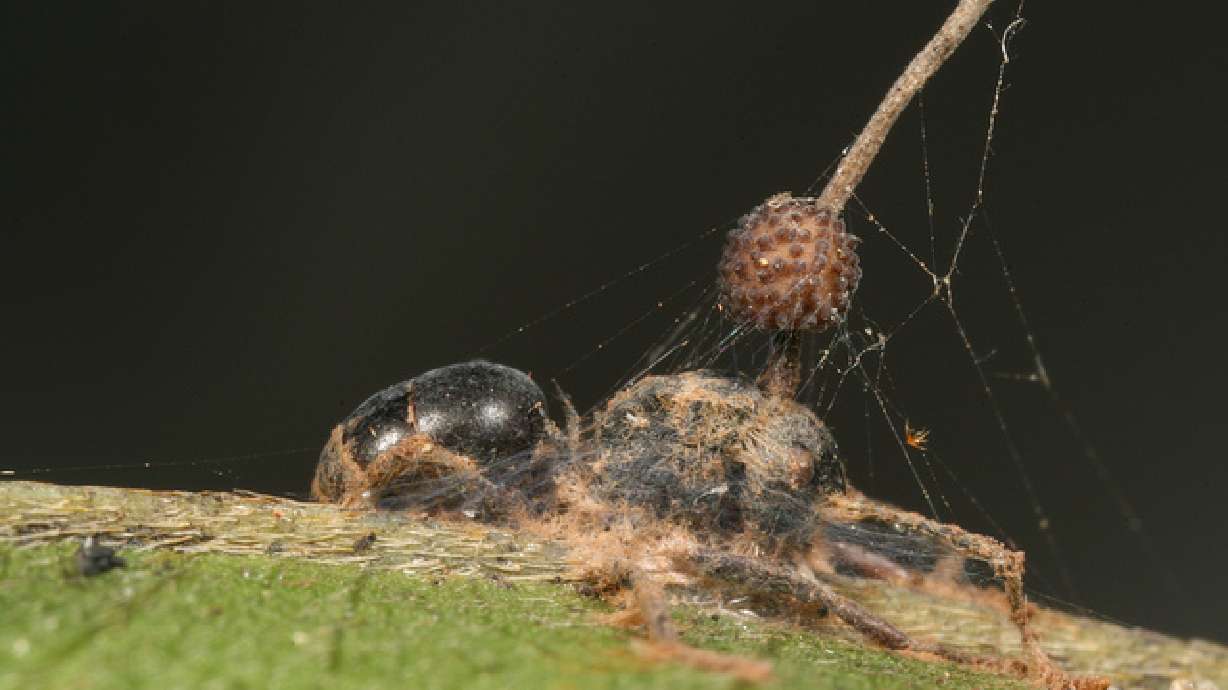Estimated read time: 3-4 minutes
This archived news story is available only for your personal, non-commercial use. Information in the story may be outdated or superseded by additional information. Reading or replaying the story in its archived form does not constitute a republication of the story.
Attack of the zombie ant! Though it may seem like the perfect title for a cheesy horror movie, scientists have discovered more about a parasitic fungus that essentially takes over the brain and body of tropical carpenter ants -- ultimately causing its host to die at a spot where the fungus has the best chance of reproducing.
The research team behind the study - published this week in the BioMed Central journal, BMC Ecology -- was comprised of scientists from all over the world. Their quest took them deep into the rain forests of Thailand, where they zeroed in on the native ants that reside there -- particularly those infected by the deadly fungus.
The fungus attacks the ants on two fronts: first by using the ant as a walking food source, and second by damaging muscle and the ant's central nervous system.
–David P. Hughes.
Researchers used special microscopes to examine just exactly how the deadly fungus invades its prey. Turns out, the process is nothing short of spooky.
Anywhere from three to nine days after infection, scientists watched as the growing fungus actually spread throughout the ant's head and body -- ultimately leading to muscle atrophy and a hijacked central nervous system.
But it didn't stop there.
Instead of sticking to the trail like normal ants, the "zombified" ants stumbled around in a stupor, suffered frequent convulsions and fell from the forest canopy to the ground. They were unable to find their way back up to the canopy, and ended up in a cooler, moist area above the soil that just happens to be an ideal environment for the fungus to spread and grow.
At this point, scientists say, the insect is half ant, half fungus.

And believe it or not, the invasion only gets weirder from here. Scientists observed that the fungus forced the ants to chomp down on a leaf -- and always right at high noon (though the exact reason for this isn't known). A locked jaw prevents the ant from detaching itself from the leaf. In fact, not even death releases the zombified ant from its final resting place.
And now for the grossest part: a few days after the ant's death, scientists found the fungus would burst through its victim's head -- creating a spore-releasing "stroma" -- or body. Those spores then latch on to unsuspecting ants just passing by -- thus renewing the terrifying process all over again.
"The fungus attacks the ants on two fronts: first by using the ant as a walking food source, and second by damaging muscle and the ant's central nervous system," said Penn State professor and study author David P. Hughes. "The result for the ant is zombie walking and the death bite, which place the ant in the cool, damp understory. Together these events provide the perfect environment for fungal growth and reproduction."
The researchers are hoping to use the knowledge gained from the study to develop ways to control pest problems in homes and farms.
I think it's safe to say, I don't have the stomach to watch this horror movie.
E-mail: jrogers@ksl.com
Story image credit: David Hughes









